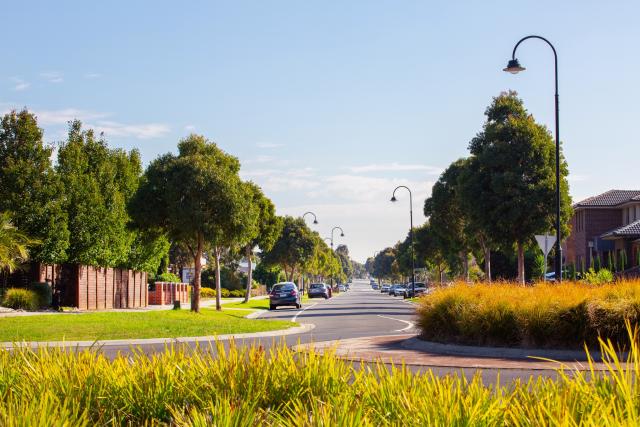
By Violet Li
Residents at Casey and Cardinia fringes have fewer accessible jobs now than about two and a half decades ago, according to urban economists.
Dr Marcus Spiller from SGS Economics and Planning said the access to jobs for the current generation of greenfield areas, which were the current edge of the city, was significantly worse than what it was in earlier generations.
Greenfield areas are former rural land in Melbourne’s growth areas that are being developed for housing, typically detached houses, including the municipalities of Cardinia, Casey, Hume, Melton, Mitchell, Whittlesea, and Wyndham.
He found the deterioration on two fronts.
The first was the total number of jobs available to the households within a reasonable travel time of 30 minutes.
He said in 1996, when Lynbrook was the fringe of Melbourne, its residents could have access to over 370,000 jobs within a half-hour drive in the morning peak, almost a quarter of the metropolitan area’s total number of jobs.
In 2001, residents living in Officer, one of the next generations of growth area suburbs, could access less than 300,000 jobs in the same amount of driving time.
In 2023, residents at Pakenham East, the newest fringe of Melbourne, would have access to just over 130,000 jobs, one-fifth of the opportunities available to their counterparts in Lynbrook two and a half decades ago.
The 2021 ABS census data showed Casey had around 365,239 residents, as Victoria’s most populous municipality, while it provided a workplace for 86,451 people.
Currently, almost 70 per cent of resident workers must commute outside of Casey for work.
Dr Spiller pointed out that job accessibility for professionally qualified people also worsened in the greenfield areas.
“What we’ve seen over the decades is those higher paid professional jobs like engineers, accountants, or health sector professionals, have tended to concentrate in the inner and middle parts of the metropolis,” he said.
“The jobs that are available to greenfield suburban residents tend to be lower-paid jobs.”
Melbourne’s south-east regions, including Casey, have a large proportion of overqualified workers, as reported by 2021 census data.
Cranbourne has 50 per cent of workers holding jobs for which they are overqualified, Hampton Park and Lynbrook 52, Cranbourne 47, Cranbourne South 44, and Narre Warren South and West 44.
City of Casey Economic Development Strategy 2021-25 revealed residents were upskilling quickly.
“Over the last three census periods, the proportion of bachelor degree educated residents increased from 27 per cent to 35 per cent,” it stated.
“The primary field of study for the highest qualifications by Casey residents are in the areas of management and commerce with 19 per cent, engineering and related technologies with 17 per cent, society and culture with 11 per cent, and health with 8 per cent.”
While residents are getting more and more professional, Dr Spiller said the current industry structure for Casey was not sustainable.
“A lot of jobs are health care and social assistance,” he said.
“They tend to be not doctors and highly trained medical technicians, but lower-paid jobs like orderlies, cleans, and carers for people with disabilities.
“Even though their work is astonishingly important, they don’t really get paid what they deserve.”
He also emphasised there were a lot of retail jobs in Casey, which are not highly paid jobs.
Dr Spiller said there should be a proactive State Government program to decentralise government jobs to suburban locations like Casey.
“One reason is equity. We don’t want to have a divided city where we have a prosperous inner city and outer areas with fewer opportunities,” he said.
“Another reason is for productivity. Because of the lack of highly paid and high-skill jobs in areas like Casey and Cardinia, a lot of people are doing jobs that don’t make full use of their skills and training.”
He said it would be hard typically for women with professional degrees to access the right jobs, though not exclusively.
“If they’ve got childcare responsibilities, the only jobs they could reach within the distance don’t really enable them to utilise their engineering training,” he said.
“That means that the investment we’ve made in training people to be engineers is wasted, and we lose that productivity.
“There’s also a transport reason so that we have less commuting, less congestion, and less commuting time.”
City of Casey Manager Growth and Investment Kathryn Seirlis said with a current population of 400,000, which was expected to grow to more than half a million people by 2046, the council had been actively planning for the future.
“We will continue to work with the Victorian Planning Authority (VPA) to plan for the delivery of new high-value employment land in Casey that will attract businesses in our priority sectors,” she said.
“The Croskell precinct structure plan and Casey Fields South precinct structure plan have provision for 9700 new jobs in the municipality, while the Officer South precinct structure plan is predicted to unlock more than 140,000 jobs in the Casey and Cardinia region and increase economic output by $58 billion.”
She said the council was actively pursuing new and emerging sectors through its Choose Casey campaign.
“Council has identified five priority sectors, including advanced manufacturing, that it will target to grow jobs and diversify the local economy,” she said.
“Through the Choose Casey Concierge Service and Partnerships for a Growing Casey programs, council has fostered effective partnerships with businesses and the development sector resulting in new business growth, including the recent expansion of Nuttelex into Casey, creating 40 new local jobs.”
The other four priority sectors include creative industries, logistics, professional business services, and visitor economy.






